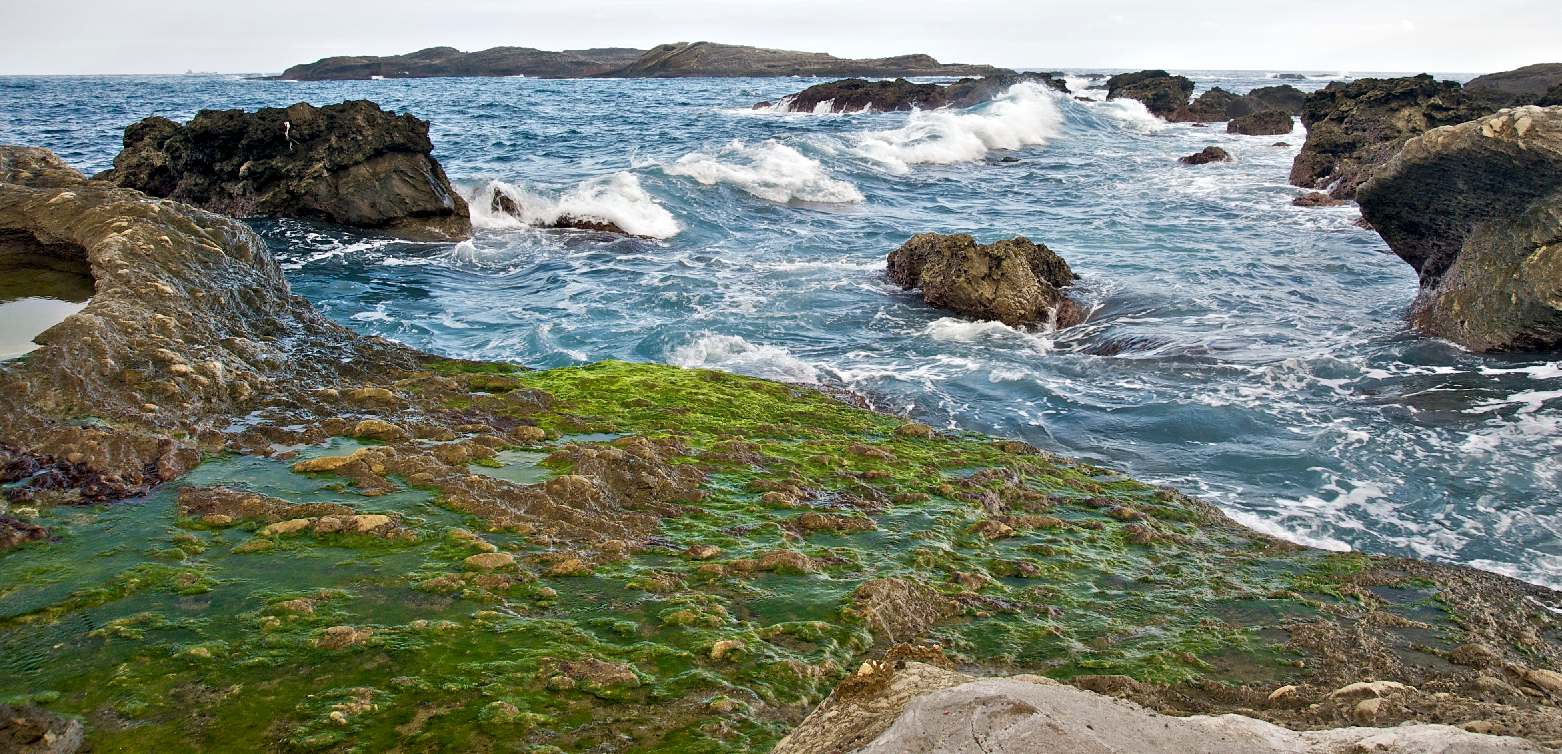|
PHYTOPLANKTON
ABOUT - HOME - WHALING - A-Z INDEX
PLANKTON - Is all around us in various forms, a largely untapped food source.
In an effort to feed a growing population we should look at alternatives lower down the food chain to increase the ratio at which protein is harvested from the ocean, so bypassing the conventional food chain where at each stage of consumption there are significant losses in the conversion process. Plankton could play a part in filling the widening gap between falling fish stocks and higher demand to feed humans.
PHYTOPLANKTON
Phytoplankton are photosynthesizing microscopic biotic organisms that inhabit the upper sunlit layer of almost all oceans and bodies of fresh water on Earth. They are agents for "primary production," the creation of organic compounds from carbon dioxide dissolved in the water, a process that sustains the aquatic food web.
Different types of phytoplankton fill different trophic levels within varying ecosystems. In oligotrophic oceanic regions such as the Sargasso Sea or the South Pacific Gyre, phytoplankton is dominated by the small sized cells, called picoplankton and nanoplankton (also referred to as picoflagellates and nanoflagellates), mostly composed of cyanobacteria (Prochlorococcus, Synechococcus) and picoeucaryotes such as Micromonas. Within more productive ecosystems, dominated by upwelling or high terrestrial inputs, larger dinoflagellates are the more dominant phytoplankton and reflect a larger portion of the biomass.
ABOUT PLANKTON
Plankton is a Greek word which means "wanderer" or "drifter" and it is used to describe the class of marine plants and animals which have limited ability or no ability to to move or "swim". Thus they simply drift in the ocean currents and occupy most of the surface area of the earth's oceans. Marine means "of the ocean", so marine plankton are organisms which can live and grow in salt water. Some marine plankton, like the microscopic animal organisms called zooplankton, do have limited movement, as do a few species of the microscopic plant organisms called phytoplankton.
LINKS & REFERENCE
https://en.wikipedia.org/wiki/Algae https://phys.org/news/2017-12-algae-krill-tough-european-consumers.html
MARINE LIFE - This humpback whale is one example of a magnificent animal that is at the mercy of human activity. Humans are for the most part unaware of the harm their fast-lane lifestyles are causing. We aim to change that by doing all we can to promote ocean literacy.
Anchovies | Bass | Bream | Catfish | Clams | Cod Coley | Crabs | Crayfish | Eels | Grouper | Haddock | Hake | Halibut | Herring | Jellyfish Krill | Lobster | Mackerel | Marlin | Monkfish | Mullet | Mussels | Oysters | Perch | Piranha | Plaice | Pollock | Prawns | Rays | Sablefish | Salmon Sardines | Scallops | Sharks | Shrimp | Skate | Sole | Sprat | Squid | Sturgeon | Swordfish | Trout | Tuna | Turbot | Whiting
This website is provided on a free basis as a public information service. Copyright © Cleaner Oceans Foundation Ltd (COFL) (Company No: 4674774) 2022. Solar Studios, BN271RF, United Kingdom. COFL is a charity without share capital.
|

